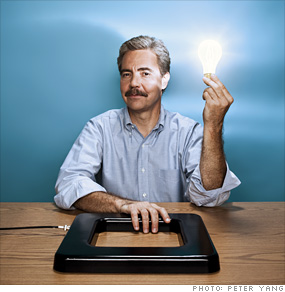Next Little Thing 2010
Wireless electricity. Invisible speakers. A mind-reading headset. See what's coming in 2010.

WiTricity
Cambridge, Mass.
Marin Soljačić couldn't sleep. The problem was his wife's Nokia cell phone. The tyrannical device beeped on the bedside table when it needed to be plugged in. It could not be disabled.
Instead of taking a hammer to the phone, Soljačić marveled at the fact that this device, and billions of others like it, was sitting a few feet away from all the electricity it could ever need. Why couldn't it receive power wirelessly, just as laptops get Wi-Fi?
A physics professor, Soljačić dug into the problem and learned that if you could get two magnetic fields to resonate -- to sing the same note, in effect -- they could transfer an electric current. With two large magnetic coils, he found a way to throw 60 watts across a room, powering a lightbulb. MIT, his employer, quickly patented the technology and encouraged Soljačićto start a company.
WiTricity's 15 employees are hard at work proving that Soljačić's magnetic coils can power almost any electrical device. Most of the company's potential customers have one major question: safety.
"There's a real perceptual problem," says CEO Eric Giler. "People think we're putting electricity in the air, and that's called lightning, and they know to stay away from that."
In fact, the coils turn electricity into magnetic fields, then back into electricity. Magnetic fields interact weakly with humans; as far as the fields are concerned, we are no different from air. Giler makes a point of standing between the coils whenever he demonstrates the technology.
At the Nikkei electronics conference in Tokyo in October, he was able to power a 1,000-watt klieg light from across the room -- a far cry from that 60-watt lightbulb in Soljačić's first experiment. "We're going up the power curve," he says. -Chris Taylor
NEXT: Breaking the sound barrier
